Peter MALONE
Saturday, 09 October 2021 13:02
Men of San Quentin
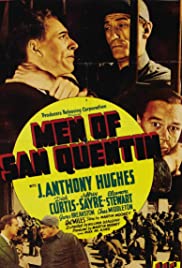
MEN OF SAN QUENTIN
US, 1942, 77 minutes, Black-and-white.
J. Anthony Hughes, Eleanor Stewart, Dick Curtis, Charles Middleton, Jeffrey Sayre, George Breakston, Art Mills.
Directed by William Beaudine.
This is a rather sombre film of 1942, a strong promoter of prison reform, focused on the Californian prison of San Quentin on San Francisco Bay. The making of the film had the collaboration of the warden and staff and prisoners. There is something of a documentary atmosphere with the use of some of the actual San Quentin locations and overviews.
The film was released in 1942, in the aftermath of Pearl Harbor, and there are patriotic speeches at the end of the film promoting the buying of war bonds.
The film highlights the fact that there are 6000 prisoners in San Quentin, that 90% of them are first offenders or second offenders and have the capacity for reform and rehabilitation but are exploited by the remaining 10%. There are riots, murders, the film opening with all the prisoners being in lockdown for one month.
There are criticisms of the authorities, of the warden. When there is an escape attempt and one of the guards is shot, the warden wants to cover it up and primes selected guards and prisoners to testify against the newly arrived warden, Holden, a man of integrity, just married, played by J. Anthony Hughes (with Eleanor Stewart as his sympathetic wife). They are also friendly with a newspaper editor who is eager to do some expose of life in the prison.
The action is complicated by the leader of the escapees, who had murdered the guard as well as a fellow prisoner, caught, brought before a board, confessing to what had happened. In the meantime, the warden puts one of the prisoners as the worker in the home of Holden, to spy on him, but who confesses to the truth and, with the gun that he had hidden, shoots the warden.
Holden comes before an official board, expects to be fired, but they are impressed and offer him the job of the warden – which means that the rest of the film is about his humanitarian efforts to improve life in the prison, turns solitary cells into classrooms, establish courses and study programs, encourage arts and performance. There is still one more attempt at an escape but the prisoners are supporting the warden and the young prisoner that is being used, Louis, is able to alert Holden to what is happening.
The media, newspapers and radio, support the reforms and, in the context of a concert performance, Holden gives final speeches about the aims of reform – and the appeal for buying war bonds.
The following year, there was another film about prison reform, Prison Mutiny.
Published in Movie Reviews
Published in
Movie Reviews
Saturday, 09 October 2021 13:02
Iris/ The Shadow of Iris
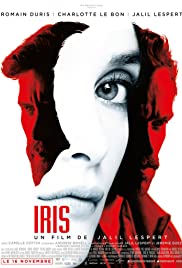
IRIS/ THE SHADOW OF IRIS
France, 2016, 98 minutes, Colour.
Romain Duris, Charlotte Le Bon, Jalil Lespert, Helene Barbry, Adel Benchenif, Camille Cottin.
Directed by Jalil Lespert.
This is a film of many ambiguities. While there is a direct narrative, there are quite a number of flashbacks, not necessarily in chronological order, something of a jigsaw puzzle, the pieces eventually coming together.
The film is based on a screenplay by Australian author, Andrew Bovel (Lantana, Book of Revelation, Placid).
The film seems to be about an abduction, a mechanic (Romain Duris) who has spent time in jail, married with a son, is involved in the abduction – which seems to be contrived by a young woman who wants to blackmail her husband. It is not nearly so clearcut. The woman’s husband is a prominent banker who calls in detectives to solve the case but agrees to hand over the money to Max.
There are further complications when Max discovers a dead body in the apartment, buries it at night, finds that the woman he thought he had buried is still alive, working at a sex club. In the meantime, the banker has discussions with the detectives, surfacing his wife’s dislike of his sadomasochistic tendencies. This leads to flashbacks about his going to the club, an experience of being whipped by a prostitute, and the truth about what actually happened in the apartment, the death of his wife, Max unwittingly burying her but digging her up again, Max once again abducting the woman but this time with her true identity, Claudia, as a worker in the sex club.
The film has one of those amoral endings, the banker being defeated, but Max and Claudia coming through the experience and taking possession of the ransom money.
The banker is played by Jalil Lespert who also directed the film.
1. The title? The real Iris? The impersonator? And the ambiguous shadow of Iris?
2. The Paris settings, wealthy apartments, the bank and the offices, restaurants, the city streets, garages, the visit to the sex club? Creating atmosphere? The musical score?
3. The opening, Antoine and his wife, their love, her waiting at the door, his paying the bill, the disappearance?
4. The structure of the film, the narrative in the present, the many flashbacks to the past, the gradual unravelling of the truth, the real Iris, the prostitute, her work in the club, sadomasochistic, the banker and his being a client, his relationship with the prostitute, the blackmail plan? The jigsaw effect, the completion of the puzzle?
5. Max, his working with Iris, the exchange of money, the abduction plan, tying her up, the photos, the phone call to Antoine, the demands? The contrast with Max, repairing his bike, the garage, his relationship with his wife, with his son, school pickup, the arguments, his irritations?
6. Antoine, the phone call during the board meeting, the information about the abduction, his telling his secretary, his calling and the police, his explanations? His behaviour, the money, waiting at the railway station, Max passing him by?
7. The investigators, their characters, their past, relationship, working together, suspicions, interrogations? Surveillance?
8. Max, at the apartment, the dead body, his burying it? The later discovery at the club? Putting up the body, and different Iris?
9. Max and his following the mysterious woman, going to the club, sex club, the clients, the women performing, his seeing the mysterious woman, Claudia? His abducting her, taking her to the apartment, the interrogation, the explanations? The flashbacks?
10. Antoine, the discussions with the detective, the confidentiality about sexual behaviour? His sadomasochism? His relationship with his wife, her being fastidious? Prostitutes? Going to the club? The scene of his being beaten by Claudia? The relationship? At the apartment, Iris coming in, her anger, the fight with Claudia? Her death? On the bed?
11. The explanation of the plan to use Max, to get rid of the body?
12. Max and Antoine, the episode on the metro, Antoine leaving the train? The new confrontation? Max wanting the money? Getting it from Antoine? Going back to the apartment, dividing the money with Claudia, the sexual encounter with her? Walking out?
13. The police, following Antoine, the body of his wife, his shooting himself?
14. The partial solution of the case? Claudia and her money? Max and his disappearing?
Published in Movie Reviews
Published in
Movie Reviews
Saturday, 09 October 2021 13:02
Legame, Il/ The Binding

IL LEGAME/ THE BINDING
Italy, 2020, 93 minutes, Colour.
Riccardo Scarmacio, Mia Maestro, Giulia Patrignani, Mariella Lo Sardo, Federica Rossellini, Raffaella D' Avella.
Directed by Domenico Emmanuelle De Feudis.
The Binding is a contemporary horror film, capitalising on the atmosphere of southern Italy, its people, its traditions, superstitions. It is also something of a throwback to the Italian thrillers of the 1970s and 80s, the work of such directors as Dario Argento, Mario Bava.
In many ways, the narrative is fairly straightforward although there is a prologue where a woman screams, and group are participating in a ritual, the cutting of the woman’s back, her blood, and her looking into the mirror and the mirror cracking. This will be explained later in the film.
Riccardo Scarmachio is Francesco, bringing his fiancee Emma, Mia Maestro, with her young daughter, Sofia, Giulia Patrignani, to his ancestral home and to meet his mother. Needless to say, she appears somewhat sinister as does her close friend who lives in the house. On the one hand, the interior of the house is dark with a creepy atmosphere. On the other hand, while there is a cheerful meal outside, some of the action takes place in the woods, ancient trees, some trees dug up.
The house is cursed and the curse falls on the daughter, bitten by a tarantula, treated with potions, caught up in the atmosphere of the old trees, the family dog, becoming worse, her mother trying to escape with her but the car crashing.
The last part of the film is the ritual, Sofia and her being the victim, Emma becoming more involved, believing in the superstitions, participating in the rituals – and some healing when the blood flowing from Sofia on the floor combines with that of the blood of her mother. As with this kind of film, when it seems to be a resolution, there is a final growl from the ghost and a shudder – the curse continues.
1. An Italian horror story? Curse story? Southern Italy? Old traditions and superstitions?
2. The opening, the comments about southern Italy and its customs? The Binding?
3. The drive through the countryside, the landscapes, the valley and cliffs? The woods, the mansion? The grounds, the upturned trees, the old trees? The interiors of the mansion, vast rooms, bedrooms, corridors? The musical score?
4. The credibility of the plot? The Italian audiences? World audiences? The Italian perspective on southern Italy and its traditions and people?
5. The prologue, the woman screaming, the group, the demands, the knife and slash, the cracked mirror? Later returning to this sequence? The victim? Her vengeance? The curse, on Sofia?
6. The group, Francesco, bringing Emma and Sofia to meet his mother? His memories of the past? His mother bringing him up? Her friend’s presence in the house? The later revelation of his relationship with Ada, the curse, the pregnancy, the rituals? The repercussions?
7. The creation of the eerie atmosphere? The house, the interiors? The behaviour of the mother, of her friend? The touches of the sinister? The contrast with the group gathering for the meal, the announcement of the wedding, everybody friendly?
8. Emma, her love for Francesco, her engineering work? Her love for Sofia? Protective? Anticipating the wedding? Her personality? The events with Sofia, running into the woods, chasing the dog, erratic behaviour? During the night? Becoming more apprehensive, the threats of the mother, Francesco and his comments? The tarantula bite, the treatment, going to the doctor, reassurance? Sofia, the dog, chasing it into the woods, the wreath on the tree? The effect of the bite on her, with Francesco’s mother, her getting worse? Emma getting out of the car, driving away, the crash?
9. Emma, her rational approach, the care for her daughter, gradually drawn into the atmosphere, the escape, the car crash? Francesco in the background? Her gradually being persuaded by the mother, belief, participating in the rituals?
10. The rituals, the curse on Sofia, the flashback to the past and Ada? Sofia and the scratches on her arm, the bleeding? The effect of the ghost of Ada? Her presence, ever more sinister, the draining of Sofia’s blood, on the floor, Emma, the scissors, stabbing herself? The mother and her gradual collapse?
11. Sofia’s blood and meeting her mother’s? The mother reviving? Ada’s ghost and the attack, Emma struggling with her, stabbing her with the scissors? The revival? Hopes for the future and peace?
12. The ending, Ada’s unrest, a continuation…?
Published in Movie Reviews
Published in
Movie Reviews
Saturday, 09 October 2021 13:02
Black Cat, The/ 1941
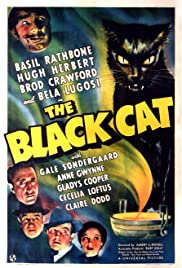
THE BLACK CAT
US, 1941, 70 minutes, Black-and-white.
Basil Rathbone, Hugh Herbert, Broderick Crawford, Bela Lugosi, Anne Gwynne Gladys Cooper, Gale Sondergaard, Celia Loftus, Claire Dodd, John Eldredge, Alan Ladd.
Directed by Albert S.Rogell.
From Universal Studios in the early 1940s, continuing the tradition of horror films. This time, it is an updating of Edgar Allan Poe’s 19th century story. It relies on many of the conventions of the haunted house films.
Celia Loftus plays Henrietta Winslow, an eccentric elderly lady, devoted to cats, all over her house, (as well as having a special crematorium for them, with an entry space large enough for her to finally join them!). It is thought that she is about to die and the family have gathered – but she has no intention of dying and she reads the will, except for a final clause which alters prospects. She seems to be generous to all the relations even though she knows how little they deserve it.
Eventually, she is poisoned and there are various attempts to get to the real will. Everybody is suspect. There are hidden passages throughout the house and mysterious hands coming out of curtains…
What makes the film interesting is its cast. Basil Rathbone is his usual stiff upper lip self is Monty, this performance coming at the time when he was making the Sherlock Holmes films and, in fact, when his character makes some remark about what happened, Broderick Crawford has the line “he thinks he’s Sherlock Holmes�. His wife, Myrna, is played by Gladys Cooper, a very aristocratic presence. However, Rathbone is in a relationship with another of the relations, Margaret, Claire Dodd. There is also her husband, Stanley, John Eldredge, as well as Monte and Myrna’s son, Richard, played by Alan Ladd.
And that is not all. Not immediately recognisable, with longish unkempt hair and a moustache, is Bela Lugosi as Eduardo the gardener. Much more immediately recognisable is Gale Sondergaard as Henrietta Winslow’s companion who is to inherit the house.
And, Anne Gwynne portrays Elaine, the nice relative. Into the action comes a young man who grew up in the vicinity and knows everyone but who is in the real estate business and has a buyer for the elaborate house. Surprisingly, he is played by Broderick Crawford, no anticipation of his Huey Long in All the King’s Men (1949) but playing the dithering junior lead, the touch of romance, slapstick comedy, making interventions at all the wrong times. And, as an extra for those who enjoyed his comedy in the period, playwright and actor Hugh Herbert comes along as a prospective buyer of the mansion’s furniture. Those who enjoy his combination of daffy and dingbat comedy, puns and one-liners, double takes, will find that he contributes comic touches to the sinister atmosphere.
Some murders and attempted murders – and, the shock for the audience at the end in the Crematorium, to find that the very aristocratic Gladys Cooper is the villain!
Published in Movie Reviews
Published in
Movie Reviews
Saturday, 09 October 2021 13:02
Officer 13
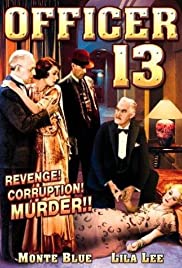
OFFICER 13
US, 1932, 60 minutes, Black-and-white.
Monte Blue, Lila Lee, Charles Delaney, Robert Ellis, Frances Rich, Joseph W Girard, Seena Owen, Mickey Rooney, Jackie Searle.
Directed by George Melford.
Officers 13 is a curiosity item from the early 1930s, small-budget, its being released in the year when Grand Hotel won the Academy award and showed how big budget filmmaking could succeed.
The action is set in Los Angeles, a focus on two policeman, played by Monte Blue, a popular hero from the silent era, especially in westerns, and Charles Delaney. They are good friends, and their families are friends. In a car pursuit, Charles Delaney is off the road and is killed. The driver is a local wealthy criminal and his passenger a socialite who is persuaded to commit perjury, the judge also corrupt, and the driver is found not guilty and, protesting, Monte Blue is sent to a small station outside Los Angeles.
The early part of the film as the drama about Monte Blue, the woman in the case, the trial, his outburst, the role of the judge, the acquittal. Later he approaches the head of the police who has not helped and is about to resign but encourages Monte Blue to continue his investigations. The witness also changes her mind about confessing.
The latter part of the film shows an illegal club, a police raid, the young woman who has changed her mind and given information to the police, some violent confrontations, especially the killing of the manager of the club.
The film ends happily with a family dinner.
(The film features an early role for Mickey Rooney, known this time as Mickey McGuire?.)
Published in Movie Reviews
Published in
Movie Reviews
Saturday, 09 October 2021 13:02
Vampires vs. The Bronx
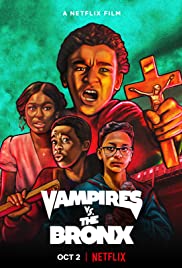
VAMPIRES vs THE BRONX
US, 2020, 85 minutes, Colour.
Jaden Michael, Gerald Jones III, Gregory Diaz IV, Sarah Gadon, Method Man, Shea Whigham, Coco Jones, The Kid Mero.
Directed by Os Rodriguez.
There could hardly be a more direct title for any film. And yet, there is a difference here. This is, in fact, a 21st-century New York Boys’ Own Adventure story, three heroes in their early teens. And, while the film is geared to this audience (and probably needs some Parental Guidance because of the theme and ways of getting rid of the vampires), it is engaging enough for some adult audiences. (Including this reviewer.)
In fact, the film is something of a fable, the gentrification of a neighbourhood and the consequences for the inhabitants as businesses and homes are bought out and the more exclusive inhabitants take up residence. But, in this case, it is age old vampires looking for a secure home where they can be themselves and get rid of any unwanted locals with impunity. And the fable has racial overtones because the age-old vampires are white and the Bronx people we see are African- American and Hispanic. (And, in a touch of gender equality, the supreme commander of the vampires is a white young/ageless woman, Vivian, Sarah Gadon.)
We see at once what the vampires are up to when a young woman who runs a beauty salon sells out but then is overcome by a vampire. But, then it all moves to something cheerier, the three boys, Miguel, Bobby, Luis, are busy putting up posters for a celebration for their local hero, Tony, who runs the Bodega, the general store. Actually, the impact of the film is very strong because of the screen presence of the boys, Jaden Michael as Miguel, Gerald Jones III as Bobby, Gregory Diaz IV is the bespectacled Luis, rather short and nicknamed by others as Potterpuerto. Miguel is a determined leader and Jaden Michael makes him most credible. There are also some girls in the neighbourhood, especially Rita, from Haiti who says her upbringing has prepared her for vampires!
Audience emotions are sad when Vivian comes to Tony’s Bodega and he realises that she casts no image – and she returns, destructively.
Vampires look sinister, have bought up the local courthouse to form their nest (and the boys find them suspended from the roof!). When they realise the threat of the vampires to their families and to their livelihoods, Luis provides them with background information and so they collect all the means to destroy them. This includes going to Mass – with a strong Fr. Jackson who keeps an eye on the boys (Method Man) and, while no offence is intended by the filmmakers, the boys add a host and holy water to their resources of stakes, garlic, and garlic powder.
Ultimately, the community support the boys and it is Fr. Jackson who strikes the final blow against Vivian.
The screenplay owes much to a number of vampire films and there are quite some resemblances to the 1987 The Lost Boys. Only 85 minutes, serious material, the light touch, and we are on the boys side in their own adventure!
1. The title? An exact title? The arrival of the vampires in the US, the searching for a place to stay, unobtrusive, eliminating the inhabitants? The use of real estate? Buying up buildings? Killing owners?
2. The title and the plot as an allegory, white oppression of black and brown races in the Bronx?
3. The picture of the Bronx, the streets, apartments, shops and buildings, businesses, the court house and interiors, lanes and darkness? The musical score?
4. The focus on the youngsters? An entertainment for the younger audiences? The vitality of the screen presence of the boys, their characters, ingenuity, action?
5. The prologue, Becky and her doing Vivian’s nails? Frank Polidori and the deal? The vampire?
6. Tony’s bodega, a refuge for the boys, his friendship, the sales, the boys and their plans for the celebration, the posters around the Bronx? The boys watching Blade with him? Genial, Vivian coming into the shop, her purchase, friendliness, Tony seeing there was no reflection, her return, the fight, destroying him?
7. The three boys, their ethnic backgrounds, African- American, Hispanic, Puerto Rico? Their ages? Their bonds? Their families, their mothers? The absent men? The local gangs and their influence?
8. Miguel, leader, putting up the posters? The friendship with Bobby? His tough connections? Luis, the Puerto Rican background, his glasses, Potterpuerto? Their working together? The encounter with Father Jackson, his story, keeping an eye on them?
9. The discovery of the vampires? Their presence, appearance? Frank and his being the agent? Miguel and his knowledge? Luis and all the information? Rita from Haiti and her knowledge?
10. The visit to the office, the receptionist, Frank and his donation? Their taking his bag with the USB? The plan for the vampire nest? The court house and the sale?
11. Trying to tell people? Tony believing them, watching Blade and Wesley Snipes’ techniques? The police laughing?
12. Going to Mass, Father Jackson and the Mass, Luis taking the host, filling the bottles with holy water, getting the crucifixes, the garlic, the garlic spray, getting pieces of wood, sharpening steaks? Going into the nest, the vampires hanging, the various devices for destroying them, the holy water boiling to indicate their presence? The garlic spray, impaling? Luis putting the host in the mouth of the vampire?
13. Frank, getting the gang to do the dirty work, getting Bobby, but his escaping, their trying to mug the vampires, their deaths?
14. Frank wanting to become a vampire, doing all the deals, the boys warning him that he will never get immortality – and the vampires killing him?
15. The people eventually arriving? Vivian and her confrontation? Father Jackson and his final destruction of Vivian?
16. People happy in the Bronx, the girl who continually did the monitoring online and her summing up, Rita joining the group, mothers very happy, a rising up against oppressors?
Published in Movie Reviews
Published in
Movie Reviews
Saturday, 09 October 2021 13:02
Spree/ 2020
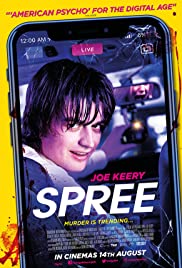
SPREE
US, 2020, 93 minutes, Colour.
Joe Keery, Sasheer Zamara, David Arquette, Kyle Mooney, Mischa Barton, Frankie Grande, Joshua Valle.
Directed by Eugene Kotlyarenko.
In 1963 there was a comedy movie, It’s a Mad, Mad, Mad, Mad World. Almost 60 years on, after watching Spree, we would think: It’s a Madder, Madder, Madder, Madder World. It’s a world where the central character tells us right from the beginning, ‘if your life is not documented, you don’t exist’.
Here we are plunged, along with the central character, Kurt (Joe Keery) into a world where the virtual world takes pre-eminence. Kurt does live in a real world (questioning the meaning of ‘live’), drives the equivalent of an Uber car, picking up passengers, but it is only a context for a virtual world. He has several cameras in his car, looks to camera all the time, speaks to camera more than to his customers, has organised his site, KurtsWorld? 96 (the year he was born) to be streamed by a friend, Bobby, whom he babysat years ago. Bobby is an entrepreneur, gives Kurt a go, but throughout the day becomes increasingly impatient with Kurt, so few people watching him, deciding to cut him off – but Kurt literally cuts him.
So, how are we reacting to Spree? Especially when we realise that Kurt is on a spree of killing his passengers?
If we are an older demographic, we are probably put off, puzzled about Kurt and his narcissistic preoccupations, his growing sociopathic behaviour, his need for acknowledgement, “not just admirers but “followers� and, until his behaviour becomes more outlandish, their lack of recognition for him.
For a younger demographic, Kurt’s world is approximating to a real world, the world of social media, the world of being preoccupied with what is on a screen rather than in reality, spending te whole day so screen-focused, a communication by tweets (sometimes hero-worship, otherwise just trolling), an assumption that this is how life is and will be into the future.
There are some dramatic moments for those who need drama (as does this reviewer), some strange cases in the fares he picks up, a self-important racist speaker, a young strutter who thinks he is God’s gift to everyone, some thrill-seekers looking for more than a trip. But, more interestingly, there is also a stand-up comedian, Jessie, who escapes from Kurt, uses him in her stand-up routine (streamed to thousands of followers), is critical of him – and, ironically, becomes his fare later in the film. It is she who confronts him – but he has no lessons to learn. This is his life.
Kurt is a celebrity in his own mind. But he craves more recognition, more followers. He is always camera-ready. But, no actual social skills. Many of the followers think he is boring and he and they want to build up to more excitement. Real life is considered trivial. The value of life depends on the number of likes.
Ironically, the title for Jessie’s act is ‘All Eyes on Me’.
So, an emotional jolter. A great deal of challenge (but the fear that many audiences may well be identifying with Kurt and his dreams and goals).
The makers enjoy more irony with the song over the final credits, endowing it with different meaning, “I will follow him…
I will follow him, follow him wherever he may go
There isn't an ocean too deep
A mountain so high it can keep me away. (As long as there is a signal in the mountains.)
1. The title, the tone? A social media spree? A violent spree? Murder spree?
2. The setting, the social media world, so much of the film on mobile camera, framing of characters and events? Streaming?
3. The plausibility of the plot? Kurt born in 1996? His site, 1996? From the 20th century into the 21st-century? Preoccupation with social media, with recording himself, wanting followers? The setting up of his car? The passengers? Overtones of Uber? Bobby’s program and Kurt’s inclusion? The picking up of the passengers, the injection of the water, the collapsing, death, his treatment of the passengers? The number of followers? The number of tweet comments?
4. Kurt as a character, white American male, 23, his relationship with his father and tensions, his mother leaving? His personality, wanting recognition, approval, followers? The intensity of his character, the relationship with Bobby, the past babysitting, Bobby allowing him on the stream, yet highly critical of him? Kurt pleading with him, eventually killing him?
5. Kurt, his passengers, the white racist and the conversations, Mario and his attitude towards women, Jessie, the comedian, the interactions with Mario? The thrill-seeking passengers, the woman in the front and his eventually killing her? The two with their heads above the car, the thrills, their deaths? His gross tweeting about sex, killing, the intense responses?
6. The focus on the response of the followers, their anonymity or codenames, the film and its fast listing of tweet comments, the audience unable to follow them all, their comments, criticisms, trolling, the reaction to the killings?
7. Kurt, picking up his father, their interactions, the red lights, the gun, the sequences at home, Kurt confronting his father, the dead mother, shooting his father?
8. The subplot with Jessie, Mario recognising her, her reputation, her followers, her routines? Going to visit her grandmother, the interviews and conversations? Her initial encounter with Kurt? The MC at the club, his friendship with her, travelling with her, getting her to the club, the introduction, audiences not laughing? Her performance, the criticisms of Kurt, criticisms of social media and the consequences, stamping on her phone, her saying she was giving up social media?
9. Kurt, his driving, the police, his reckless driving? Crashing the car? Getting the old man, driving him? The new car, picking up Jessie, the conversations? Taunts? The amount of tweeting and commentary?
10. His taking her the wrong way, to his house, her driving the car, crashing into the house? His taunts, her crushing him against the wall?
11. His final comments, the summary of his life? “if you’re not documented, you don’t exist�?
Published in Movie Reviews
Published in
Movie Reviews
Saturday, 09 October 2021 13:02
Yank in Libya, A
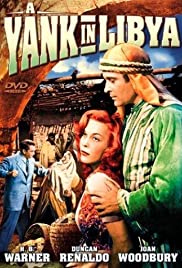
A YANK IN LIBYA
US, 1942, 67 minutes, Black-and-white.
H.B.Warner, Walter Woolf King, Joan Woodbury, Harry Parke, Duncan Renaldo, George J.Lewis, Wilhelm von Brincken.
Directed by Albert Herman.
This is one of many supporting features from the early 1940s, part of Hollywood support of the war effort. While this film was released some months after the bombing of Pearl Harbor, this focus is on German supremacy and the expansion of the influence in North Africa.
It is not a particularly good film. The main difficulty is that many audiences found the leading man rather irritating and somewhat obnoxious, emphasis on Yank, the rather strutting American abroad, loud, dominating, presuming that he will win the war! He is played by Walter Woolf King.
It is H.B.Warner who has his name above the title is, playing the British Consul in Libya. As always, he is a measured presence, irritated by the American, aware of the German influence, aware of the rivalries amongst the sheiks and the tribes.
Also present is the comic Harry Parke, Parkyakarkus, seeming to be a seller of razorblades but ultimately revealed to be an undercover agent. He has some comic moments – but, they are a matter of taste. Then there are the two sheiks, one who could be loyal to the Allies, the other, ambitious, goaded on by the German agent in the city, getting the German support for his ambitions.
There is also a glamorous presence, Joan Woodbury, her brother who works with the consulate, the potential for a romance – though what she sees in the hero is something of a puzzle!
Some scenes of bombast, some scenes of corny humour, some scenes of the tribes riding into the town, an attempted assassination on the good sheikh, but the British able to command loyalty against the Germans – but it is only 1942 (and later generations know the outcome).
Published in Movie Reviews
Published in
Movie Reviews
Saturday, 09 October 2021 13:02
Miss Fisher and the Crypt of Tears

MISS FISHER AND THE CRYPT OF TEARS
Australia, 2020, 101 minutes, Colour.
Essie Davis, Nathan Paige, Rupert Penry- Jones, Miriam Margolyes, Daniel Lapaine, Jacqueline Mc Kenzie, Izabella Yena, Kal Naga, John Waters, John Stanton, Ian Bliss, William Zappa.
Directed by Tony Tilse.
There were 34 episodes of Miss Phryne Fisher and her cases on Australian television. They were popular. She was popular. She was played by Essie Davis (The Babadook, The True Story of the Kelly Gang), a particularly strong and dominant character, involved in all kinds of detection, and something of a fashion plate.
Perhaps it was inevitable that there would be an attempt to capitalise on her presence on the big screen. Unfortunately, this film was not a critical success and many found it disappointing. However, it provided entertainment for many of the fans of the series.
This adventure opens with a veiled Miss Fisher, being pursued through the streets of Jerusalem – plenty of action in her exploits and, with a lot of derring-do, weapons, ability to fight, skill in escaping, the Indiana Jones comparison comes to the fore. However, looking for a female equivalent in the action hero genre, the main character who comes to mind is Lara Croft – and, even at the end, some tomb-raiding.
As with the series, the action takes place in the 1920s, memories of World War I, sufficiently glamorous in the flapper age to rely on eye-catching costumes and decor, especially the outfits that Miss Fisher seems to have readily at hand.
The plot involves a Sheikh, his missing niece, memories of the massacre in her village and the death of her mother, eventually the revelation of the theft of jewels from ancient tombs. The initial chase action keeps pace with Miss Fisher being grilled by authorities in Jerusalem, springing the niece from jail, motorbike through the desert, a Butch Cassidy and Sundance leap onto the roof of a moving train, a grim tunnel… And the report coming that Miss Fisher had been killed. A detective love, Jack (Nathan Page) is seen in Melbourne but deciding to go to London for a memorial to her. Friends and family are assembled, with some glimpses of Aunt Prudence (Miriam Margolyes) and a spectacular gatecrashing entry by Miss Fisher, landing her plane on the lawn where the memorial ceremony is taking place.
There are a number of mysterious characters. There are a number of mysterious killings. Members of a family are involved in the mystery of the jewels, especially the rather alcoholic and disreputable Lord Lofthouse (Daniel Lapaine) and his wife (Jacqueline Mc Kenzie) and the much more respectable brother, Jonathon (Rupert Penry- Jones). But, it is back to Jerusalem, the visit to the crypt and the revelation of the mystery.
There are some cameos by veteran Australian actors, John Waters as a professor in Jerusalem, John Stanton as a prim butler, William Zappa as a police chief.
The screenplay was written by Deb Cox, veteran of the series but also a wide range of television series, directed by Tony Tilse who also has an extensive list of credits for television and cinema.
1. The popularity of the television series? A cinema spin-off?
2. Audience knowledge of Miss Fisher, liking her, her character, skills, style, exploits, detection? The touch of Indiana Jones? The touch of Lara Croft?
3. The settings, Jerusalem, the desert? Melbourne scenes? The English country estate?
4. The period, costumes and decor? Miss Fisher and her dress and colour style? British formality? The musical score?
5. The introduction, Miss Fisher running through the crowds, her blue cloak, on the pursuers, her vanishing? The interview with the British authorities in Jerusalem? Her searching for the Sheikh’s niece? British disapproval? Her gun taken, the bullets emptied, her stealing one? Tying up the guard? Escape? Outside the cell window, her red dress? Discussions with Shirin? The donkey pulling the grill? The escape? Through the desert, the motorbike, the cliff, onto the train roof, the dangers, Miss Fisher presumed dead?
6. The transition to Melbourne, Jack and his work, decision to go to London? His arrival, the country estate, Aunt Prudence present, the memorial, the speeches, the family and friends? The plane, Miss Fisher alive, carefree, Jack and his reaction, walking off?
7. Jack, his character, presence in the series, his relationship with Miss Fisher? His being upset with her, her relying on him, manipulating him?
8. The Lofthouse family, the alcoholic brother, his superior attitudes, relationship with his wife? Hosting the dinner? The contrast with Jonathon? His demeanour, his history?
9. The arrival of the Cheikh, his niece? Her gratitude towards Miss Fisher? The discussions, the political implications? Memories of the war? The story of the massacre, the stealing of the jewels? The pendant and the emerald? The atmosphere of the household? The role of Crippins, serving, advising, especially Jonathon?
10. Miss Fisher, the visit to the church, the contact, his being shot, the emerald?
11. The Sheikh being shot? The mystery? The decision to return to Jerusalem? The initial meeting with the professor and his information, visiting him again?
12. The visit to the crypt, Shirin and her presence, Jonathon, Jack, Miss Fisher? The crypt, the jewels, the more recent skeleton?
13. Miss Fisher, the explanation of the case, Jonathon and his confession, the past, his presence with the soldiers, the stealing of the jewels, the killing of Shirin in the crypt, the group escaping? The shot being fired?
14. The resolution of the case – and the prospect of returning to Australia?
Published in Movie Reviews
Published in
Movie Reviews
Saturday, 09 October 2021 13:02
Social Dilemma, The
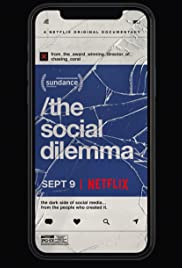
THE SOCIAL DILEMMA
US, 2020, 94 minutes, Colour.
Directed by Jeff Orlowski.
This is a documentary alert to the impacts of social media. One blogger remarked that it was five years too late – but yet on time.
For those concerned about the impact of social media, this is a film to be seen and discussed. While it is a film of talking heads, very intelligent and well-informed talking heads, it also uses, less effectively, some dramatic recreations, especially of a family and teenagers dealing with the technology. There is a telling scene where the mother puts all the mobile phones into a sealed jar and the teenage daughter, absolutely desperate, hacking away to get her phone out.
While this sets something of a tone, with some drama, most of the film is an appeal to our minds as well is our emotions.
There is a cumulative effect from the experts in explaining the origins and developments, especially in Silicon Valley, and the rapid impact on consumers. The speakers offer a challenge to the public, to consider the impact of their use of social media and the question of how much it controls them. There is the amount of information gained about users and how it is used, guiding choices without the users necessarily realising this. Profiles are gathered and information and advertising geared because of the profiles.
Amongst those speaking are hands-on technicians, inventors and creators, who have seen the results of their work and are in a position now to appeal to the public to be cautious. While one can’t turn back the clock, one can be wary, critical, making assertive choices rather than simply willingly or unwittingly succumbing to choices made by the social media companies.
In one sense, this documentary is not surprising. These are the kinds of discussions that have been increasingly prevalent over recent years. But in another sense, the documentary is quite surprising, the extraordinary developments of the technology, the spread of social media, the extraordinary influence, and the possibilities for indoctrination, forced choices, social media taking over our lives.
This is the kind of documentary that should be seen and discussed.
Published in Movie Reviews
Published in
Movie Reviews